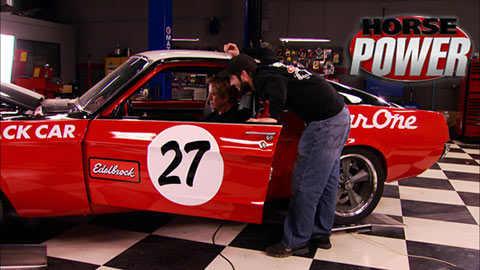HorsePower Builds
Want more content like this?
Join the PowerNation Email NewsletterParts Used In This Episode
Autopower Industries,Inc.
Bolt-In Roll Cages are SCCA & NASA legal for club racing. Top of the line in fit and construction. These cages are made to order, allowing for tube size and type to be selected. Diagonal cross brace and horizontal brace are a permanent weld-in design.
Currie Enterprises
Fabricated housing with LB Torino ends and 3" axle tubes
Custom Autosound
Secretaudio Hideaway 200 Watt AM/FM CD Controller with USB MP3/WMA Flash Drive, iPod control, CD Control, Satellite Radio Control
Edelbrock
80 gph electric fuel pump, regulator, relay kit
Flaming River
Flaming River Universal Joints, Shaft Support Bearing, Patented Rack & Pinion Cradle, Mounting Clamp, Grade 8 Mounting Hardware, Manual Rack and Pinion.
Global West Suspension
Tubular upper and lower control arms with spindles and adjustable strut rods, Rear leaf springs with Rear Bushing and Shackle Kit using Del-a-lum bushings.
Griffin
Aluminum radiator and cooling fans.
Jaz Products
16 Gallon Pro Sport Circle Track Fuel Cell with aviation safety foam and D-ring cap.
Maxima Technologies & Systems
Stewart Warner Maximum Performance Series voltmeter, oil pressure guage, water temperature guage, oil temperature guage, fuel pressure guage, tachometer.
Painless Performance
8 Circuit Race Wire Harness w/6 Switch Contour Panel, Remote Disconnect w/Emergency Button, PowerBraid Chassis Harness Kit.
Power Probe
Power Probe III Electrical Checking Tool Kit
Urban Gorilla Tools Inc.
"Findit" Tool Marking System
Wilwood Engineering
DynaPro Lug Mount (DP) forged billet calipers and Rear Parking Brake Kit
Wilwood Engineering
Superlite 6R Big Brake Front Brake Kit.
YearOne
1968 Mustang fastback pre-welded reproduction body shell from Dynacorn.





























